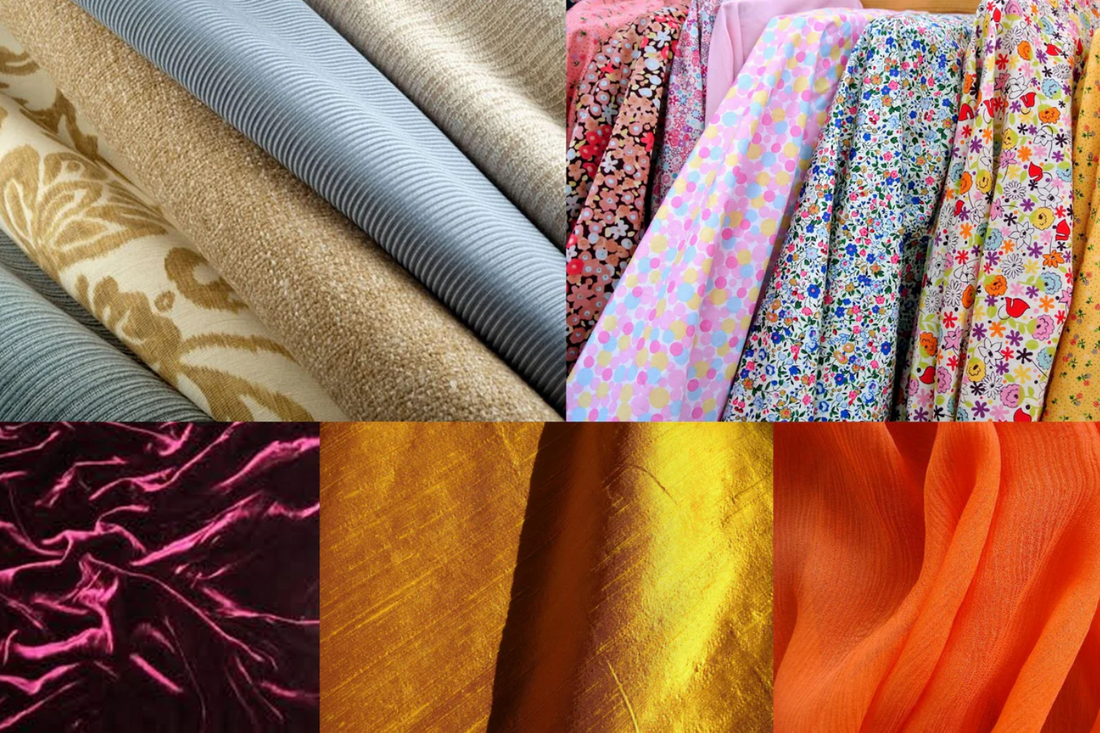
Choosing Premium Fabrics for Ethnic Outfits That Last
The choice of cloth is essential in the case of ethnic apparel which is comfortable, durable and stylish. The use of such fabrics as chiffon, brocade, and banarasi silk characterize the feel and the purpose of the garment in Indian fashion, producing the pieces that can be worn across seasons and events.
Chiffon can be distinguished by the fact that it is a light drape, and consequently, it fits well in summer suits when it has to remain airy at the same time maintaining a graceful movement. This is a light piece of fabric that can be moved around gracefully and is mostly worn in dupattas or overlays which help to create a slightly added layer without making the outfit heavy. Instead, Brocade adds a lot of rich texture to the wedding dress with its woven design, normally using metallic strands which gives the feeling of prestige to the dress. Its gravity is befitting the formal functions, when the elaborate designs reflect the light and emphasize the classic motifs. The banarasi silk with its luxurious shininess provides a historical flavor, and it was first produced on the ancient mahajan mudri of Varanasi. The saree or lehnga can be worn with this fabric, the smooth texture and slight lustre are ideal for this garment, and it has a classic allure that unites the tradition with the chic.
These are historically fabrics that have a strong regional weaving background. Varanasi silk is a trade item that has been exchanged over centuries through ancient routes and it is a representation of wealth and artisanship. The cotton grown in the fertile lands of Punjab has the ability to offer breathable cloths to regularly wear, as hot weather should be considered in terms of practicality. The density of the weave or the distance between the threads is also important here because tight weaves create structure and durability, which is required in structured kurtas, whereas loose weaves create flow in flowing salwars or anarkalis. The knowledge of these factors can assist in choosing clothes that can fit the specific body type and other weather conditions of the home area and make the clothing look personal and convenient.
Fabric Care and Sustainability
Preservation of high quality fabrics lengthens their wear and tear, and keeps them beautiful. An example is silk which needs to be dry cleaned so that it does not shrink and also to retain its natural shine without using harsh detergents to ruin the fibers. Cotton can be washed by machine or hand in cold water and thus it maintains color vibrancy and softens with time. In the case of finer fabric such as chiffon or georgette, shading out in the sun is avoided by airing out in shade. Wear and tear can be avoided considerably by using regular care practices, including keeping the bag in breathable bags without moisture.
Green is becoming a critical factor in selection of fabrics. The choice of organic cotton (grown without using pesticides) or recycled silk reduces the effect on the environment and helps the ethical production. These alternatives can be connected with the rising awareness about the environmental issues and people who prefer to invest in long-lasting items instead of buying the fashionable but not long-lasting ones. Craftsmen in other areas are using natural colorants found in vegetation, and chemical wastes are minimized, and the natural touch of ethnic garments.
The Fiza Boutique shows how traditional fabrics have been the key to long-lasting ethnic fashion, which contributes to local weavers who preserve the tradition.
Styling for Different Seasons
Adjusting clothes to every season provides versatility. Velvet gives warmth during winter with its soft feel, ideal in shawls that are cosy or embroidered jackets that are layered over lighter jackets. Linen is a preferred monsoon fabric with breathability and fast drying quality to wear on a daily basis. Sheer georgette may be worn over solid cottons to give volume, similar to visual interest through the difference in the opacities and weight.
This intelligent design has incorporated the traditional element with a touch of practicality whereby ethnic wear can easily fit the contemporary lifestyles. Festivals or informal days, regardless, focusing on the quality of fabrics will result in meaningful and strong wardrobes that will allow building a stronger connection with the cultural roots.

